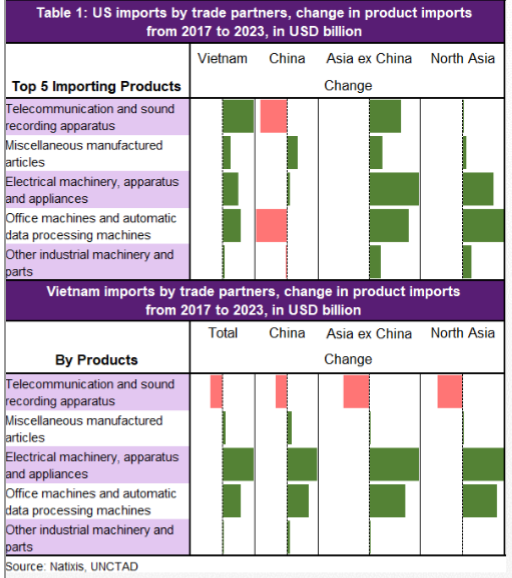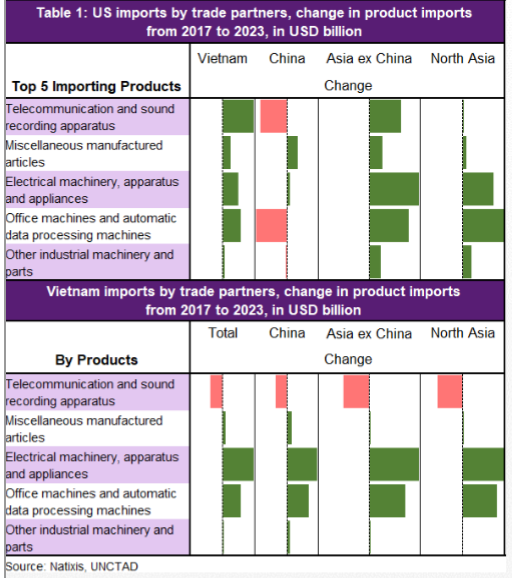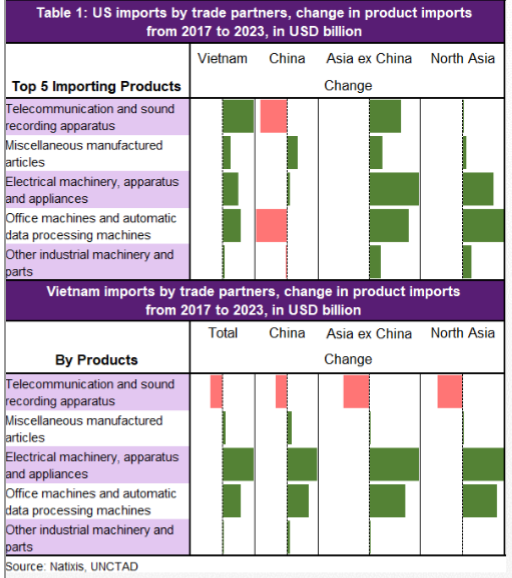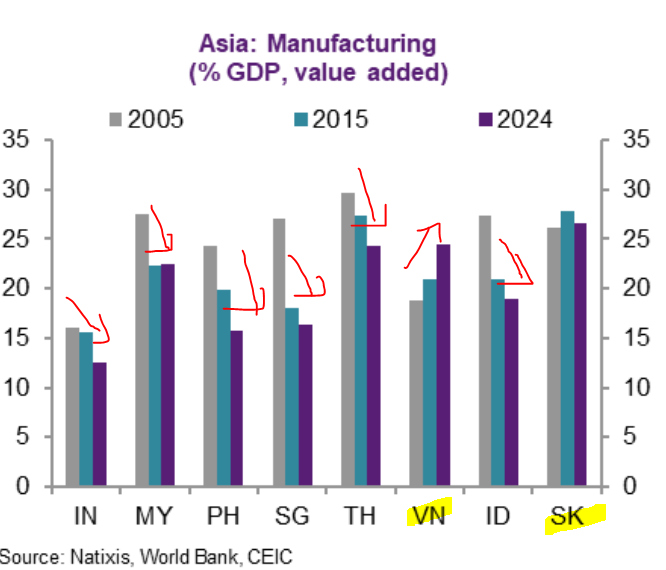Tonight we got Dallas Fed Manufacturing Activity & tomorrow is China March PMIs (still weak) & US March consumer confidence (less confident).
And of course ADP & NFP this week.
And of course ADP & NFP this week.
https://twitter.com/Trinhnomics/status/1244090203486195717
PBOC cuts 7-day reverse repo to 2.2% from 2.4%
Note this is ahead of PMIs tomorrow!
Note this is ahead of PMIs tomorrow!
Market movers since the announcement of the 20bps cut - Asian FX doesn't like it for the following reasons:
a) Yuan weakness = pressure for Asian weakness
b) China economic weakness = Asian economic weakness.
a) Yuan weakness = pressure for Asian weakness
b) China economic weakness = Asian economic weakness.
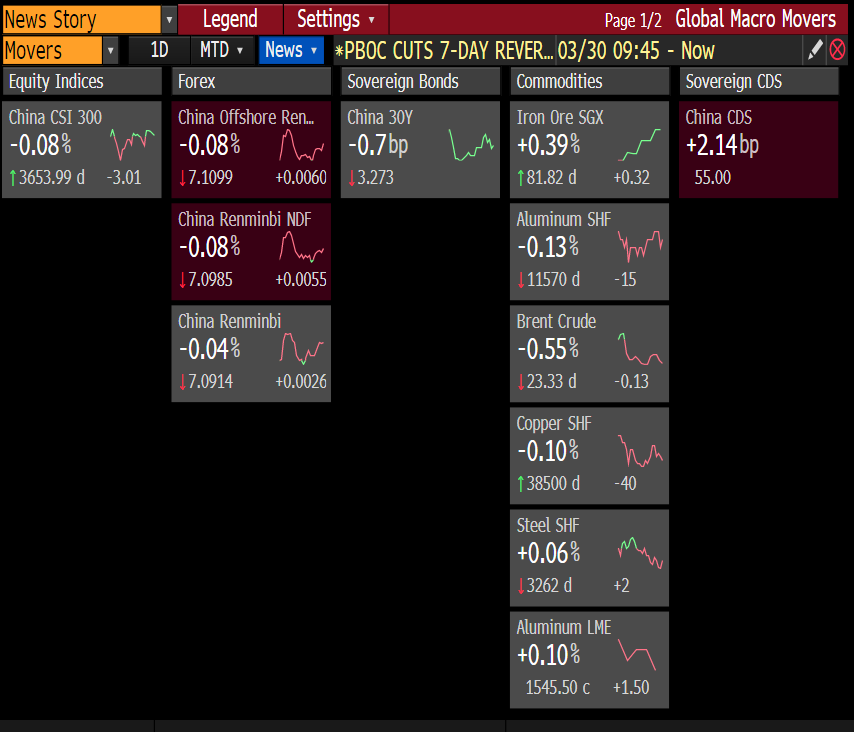
Asian FX showing weakness vs USD again after the PBOC 20bps 7-day reverse repo cut to 2.2% & ahead of the
March China PMIs data tomorrow (Feb was historic low).
March China PMIs data tomorrow (Feb was historic low).

South Korea reported -21.4%YoY department store sales (considering the outbreak not so bad) and Discount stores sales -10.6%YoY.
Note that SK is considered a model for many in coronavirus fight (containment strategy vs suppression) & it's not doing well economically either.
Note that SK is considered a model for many in coronavirus fight (containment strategy vs suppression) & it's not doing well economically either.

There is no model of fighting this coronavirus that avoids a massive contraction of economic activity, whether the much lauded containment in SK or suppression.
A globalized world means that even SK avoids a free fall & just a contraction, then it still got ICU external demand.
A globalized world means that even SK avoids a free fall & just a contraction, then it still got ICU external demand.
Some positive news: Looks like San Diego County is bending the curve (+31 new cases yesterday & no new death (5 total so far); total case 519. 

Guys, relax, obviously the +4k is too low & will change as we get more data but notice that it was +19,252 on 28 March 2020, high for this data set.
If you see a daily increase less than +19,252, then the slope is being bent as BASE HIGHER. Just math here guys.,
🤷🏻♀️
If you see a daily increase less than +19,252, then the slope is being bent as BASE HIGHER. Just math here guys.,
🤷🏻♀️

Let me show you this differently: ignore the 30th & 29th of March, let's look at daily growth rates: What do you see? Slowing down of growth rates while testing rising very fast (>100k per day). 



Deleted the 30th & 29th of March & still shows a slowing of growth rates.
Again, as the base is HIGH, u will still get massive increases of new cases.
Again, as the base is HIGH, u will still get massive increases of new cases.

Total tests 831k; Positive 139k; Negative 692k; Pending 66k:
Hospitalized 65k; Deaths 2,428
Btw, a 19% of 139k = 26,421 cases.
So if the # of new confirmed is below this, then the growth rate would go down.
Hospitalized 65k; Deaths 2,428
Btw, a 19% of 139k = 26,421 cases.
So if the # of new confirmed is below this, then the growth rate would go down.

We're COMPOUNDING at a very high rate. And hence lockdown on NYC & emergency rule in California. Don't analyze US states closely & only track San Diego County given my mom lives there but data there is positive as in absolute #s growth down. Can't say the same for other counties
Some people ask: a) Why is California doing much better than New York (CA is bigger than NY but has 1/10th of the cases & NY has half of the US cases);
Why??? Let me show u in 1 tweet why: MANAGEMENT! 🤗
Why??? Let me show u in 1 tweet why: MANAGEMENT! 🤗
https://twitter.com/Trinhnomics/status/1244275754721927169?s=20
• • •
Missing some Tweet in this thread? You can try to
force a refresh




